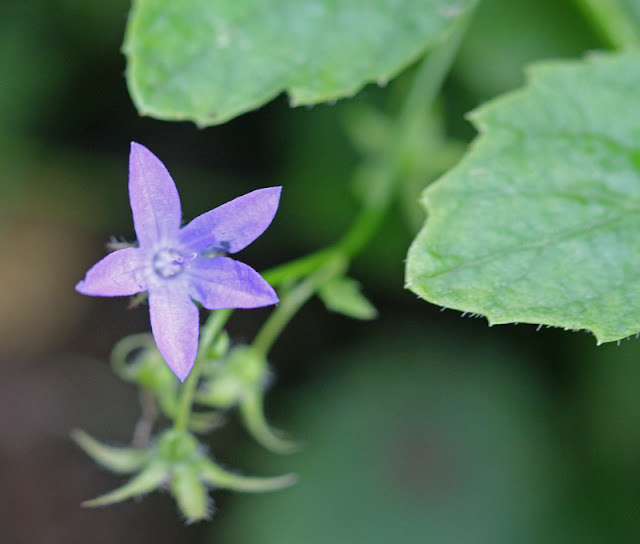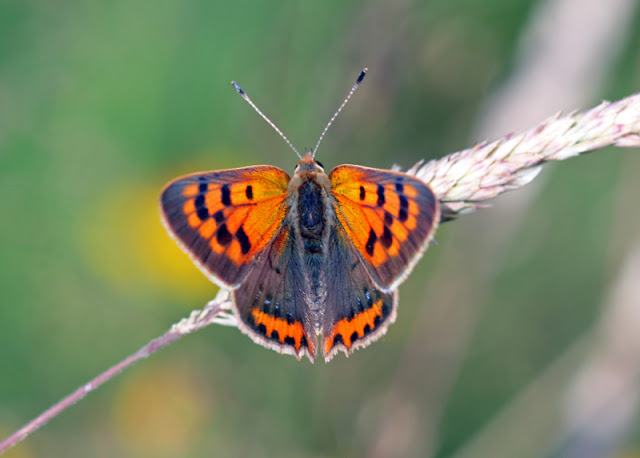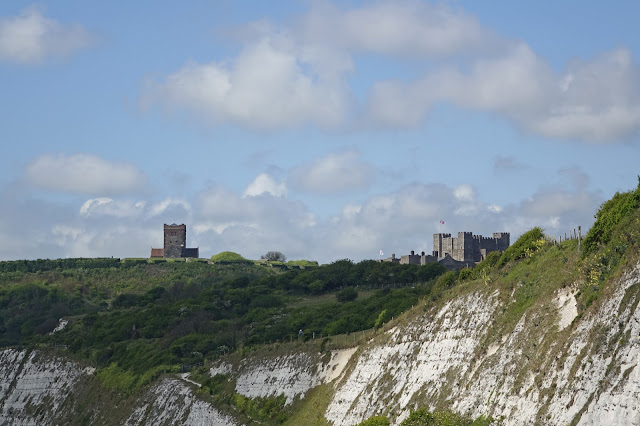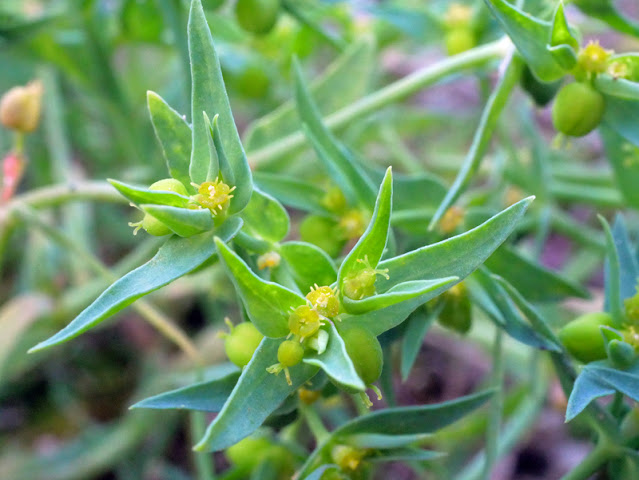Botanical Recording Field Trip Ashford West & Hothfield Bog - 16/07/17
I spent much of this day recording with the Kent Botanical Recording Group near Tutt Hill, West of Ashford. After this, I made a quick solo visit to the nearby Hothfield Bog to see more amazing wildflowers.
So, starting off with the Group, these are the highlights of what I photographed along the way.
As we walked along a country lane, we found several garden escapes in the hedgerows. I only photograph and record those species that have truly escaped. If on a garden wall I don't count it, it must have made it into the wild to count as a record.
So, starting off with the Group, these are the highlights of what I photographed along the way.
As we walked along a country lane, we found several garden escapes in the hedgerows. I only photograph and record those species that have truly escaped. If on a garden wall I don't count it, it must have made it into the wild to count as a record.
Trailing Bellflower
Campanula Poscharskyana
Pencilled Cranesbill
Geranium versicolor
Definitely one of the prettier garden escapees.
It's never just about wildflowers. If I get the chance I will photograph fauna as well, like this lovely Shieldbug.
We left habitation behind and entered an arable area bordering the Channel Tunnel/Eurostar railway line. I was very surprised to find the next plant as I've only ever found it on the coast.
Sticky Groundsel
Senecio viscosus
This next plant was in seed and the whole plant had turned a beautiful shade of red, distinctive for this species. Prior to setting seed, the plant will have purple blotches on the stem and petioles, an identifying feature only shared with Hemlock which flowers earlier than this species and is usually much taller.
Rough Chervil
Chaerophyllum temulum
Here is the star find of the field trip, a very rare wildflower which has tiny flowers.
Small-flowered Catchfly
Silene gallica
Here's where we stopped for lunch, thankfully the ground was dry.
Members of the Kent botanical Recording Group (which is free to join) come from all over Kent and nearby. It is a great way to learn about botany very quickly, with hands on help. Any of us will gladly help with how to identify a plant or any other botanical questions you may have. You can contribute even if you have little knowledge, simply by spotting something and asking what it is. Sometimes plant species are missed and every pair of eyes looking helps up the species count.
My sandwich must have smelled nice as a Meadow Grasshopper jumped on my leg while I was eating it.
From here, the main group turned back, and me and one other of the group (Danny) did a 2-3km loop to get the most records from this area. We did find many more species than if we had done this alone, an extra pair of eyes does help.
Here's another rare plant that we found in an arable field edge.
Dwarf Spurge
Euphorbia exigua
We then found a Fumitory. I've added text to the photo to show you how much detail is needed to make an identification with these species. Once familiar with them, a must have is the BSBI Handbook for Fumitories, which I now use regularly for a firm identification.
Common Ramping Fumitory
Fumaria muralis subspecies boraei
As we completed our circle and rejoined the group, recording over 100 species along the way, we found a large patch of Common Cudweed growing by the railway on sandy soils. Like many plants with the name "Common" it really isn't common now.
Filago vulgaris
In a damp area we found Water Mint with its distinctive rounded head of flowers atop the stem, itself with whorls of flowers down it.
Mentha aquatica
While we had been away, the main group had found hundreds of the rare Corn Spurrey which I wanted to see. I had only ever seen a single plant near Farningham woods a couple of years ago.
In this field were hundreds of them, a beautiful sight. Unfortunately the sun was now shining brightly so the photos were slightly over-exposed, common with white or bright yellow flowers.
Corn Spurrey
Spergularia arvensis
Along the field edge was a solitary Sunflower. This was not near habitation so would not have been planted there. However, sunflowers are often grown as a crop for the seeds which are used in oil and for bird food. I suspect this was a crop relict from a previous year's sowing.
Helianthus annua
That was it for the field trip, we all had a great time and found many records for the BSBI 2010-2020 atlas. After this, I went for a quick visit to the nearby Hothfield Bog, home to many beautiful flowers, many very rare in Kent due to the lack of habitat left.
The most obvious plant coming into flower in droves was Heather. Close up, their flowers are like shining jewels in the sun.
Calluna vulgaris
A similar plant here was Cross-Leaved Heath with its bell flowers atop a whorled leafy stem. Most are a deep pink colour, but some are white or white with a hint of pink as shown here.
Erica tetralix
There were lots of butterflies visiting these flowers, mostly Whites of one kind or another, but I do like the very colourful Small Copper butterfly that was in abundance here this day.
I had hoped to find the next plant in flower, but all were in bud still. This petite plant eats insects by trapping them on its sticky leaves. Once trapped the sticky blobs fold inwards and the unfortunate fly is digested.
Round-Leaved Sundew
Drosera rotundifolia
Perhaps one of the most beautiful bog plants is Marsh St John's Wort which was just coming into flower in places within the bog.
Hypericum elodes
Another little stunner of the bog is Lesser Skullcap. These are not much over 6" tall with tiny blue/mauve spotted flowers in pairs.
Scutellaria minor
The next plant is actually very common, but usually with pink flowers.
It's the Marsh Thistle, this one with all white flowers.
Cirsium palustre
The final plant I photographed here is without doubt the golden star of the bog! It's bright yellow flowers with orange anthers set it apart from the other bog plants. It's often up to 2' tall as well and in the right conditions can cover a large area in their flowers. They were past their best by now and you can see in the photo that the lower flowers had gone to seed.
Bog Asphodel
Narthecium ossifragum
So ended another wonderful day immersed in nature. Habitats ranged from urban fringe, hedgerows, arable field edges, sandy embankments to damp woodland areas and finally an acidic bog. That's the beauty of Kent, there are numerous habitats within the same area, giving rise to a wonderful diversity of plants.
Take Care
Dave
@Barbus59












































Comments
Post a Comment
Comments welcome from those interested in my articles. For spammers don't bother as I moderate all comments prior to posting them.